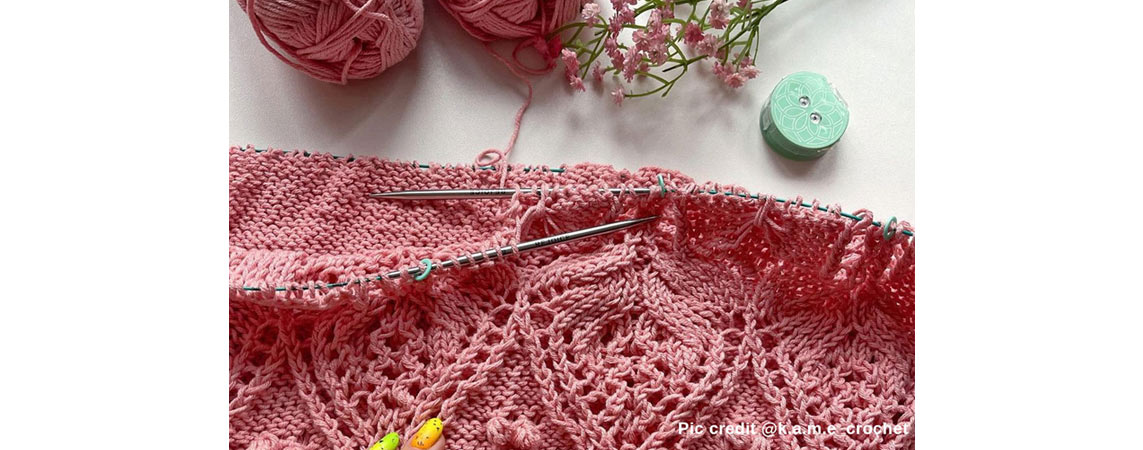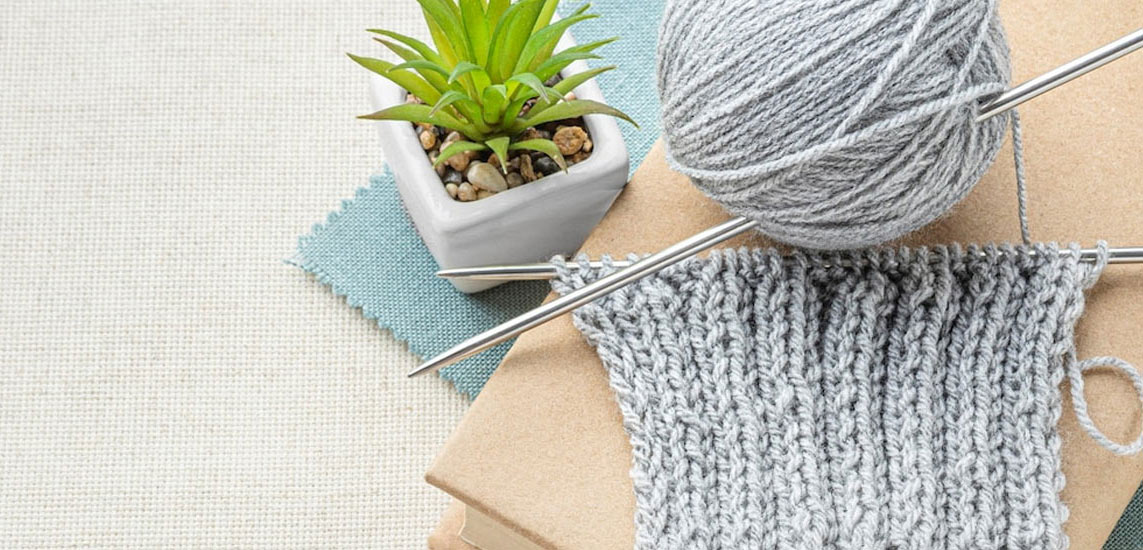Knitting is a mindful craft. Your knitting needles are not just transforming a yarn skein, ball or hank into a sweater, hat, socks or anything else. They are chanting a mantra of enjoying every moment. Such a wonderful practice can be marred with some errors. As Stephanie Pearl-McPhee, popularly known as the Yarn Harlot quoted, “It's only knitting and it's one of the few times in your life when there are no bad consequences to a mistake.” Knitting mistakes are simply knitting lessons. And, of course, most are common errors that can be corrected. If not, then tinking (unknitting) or ripping out the stitches solves almost everything than went wrong.
So, to help you with enjoyable and beautiful knitting, let’s take you through the common knitting mistakes. Every beginner or advanced knitter may have faced or may face this in their knitting projects.
1. Not thinking about the yarn properly
This is a common mistake in knitting and most knitters don’t even realise it till things get out of hands. As knitters, we are so inspired by the yarn or are so much in love with the pattern that we get your hands on the knitting needles and yarn and begin. But, then we end up not liking the project.
To avoid these common mistakes, understand that every yarn has a unique stitch definition, drape and texture. Even though they are the same weight and fiber, there can be many differences. The yarn that works for socks, may not be a good fit for a hat or a blanket. Also, some stitch patterns may also change the appearance and the feel of the yarn.
Always start your project by knitting a gauge swatch. It will give an idea of how your knitted project will look and how the yarn behaves. If you are unsure, read our post on why knitting gauge is important.
2. Not knitting a Gauge Swatch
Every knitter has learned this the hard way. Not knitting a gauge swatch is the start of a disaster, especially if you are knitting a garment. While a scarf or a dishcloth may be forgiving, other projects will not be. The rule of most knitting projects is to take up the knitting needles and yarn used in a project and knit a swatch. It is also recommended to use the same stitches in the pattern. After you have a 10 cm square, cast off the stitches and weave in yarn ends. (You can also choose not to weave in the ends if you plan on ripping the swatch and use the yarn for a project.) Wash and block the swatch. Once the swatch is ready. Use a measuring tape or a gauge tool and calculate the stitches in a cm or an inch. Make sure to count the stitches both horizontally and vertically. This will give the row count and the stitch count.
If you have the same count as the pattern then go ahead with the project. If not, then try going a needle size up or down to match gauge. You can also refer to our blog on how to get matching gauge. If you like the knitted fabric even the gauge is different, go ahead with the project. If there is not pattern to follow, the row count and stitch count can help you calculate the quantity of yarn needed. How? Simply unravel five or ten stitches and measure the yarn and then multiply with the stitch count for the entire project.
3. Ignoring the Needle Size or Type
A pattern designer provides instructions on needle size and even the needle type. Ignoring the instructions is not a good call as you won’t have a project that looks like the one made by the designer. For a project that is knitted in the round, you have the option of double-pointed or circular needles. The pattern will have instructions if you need to switch the needle. For example, if you are working on double-pointed needles you can switch to circulars. But if you want to knit back and forth on single-pointed needles or circulars and then seam the ends with a darning needle you need to start with a gauge swatch.

4. Wrong Cast on or Cast Off Techniques
If you have been following a pattern then a designer gives you complete instructions on cast on and cast off techniques. Casting on stitches means making loops on the knitting needles that will ultimately form the rows and rounds that will shape the project. A cast on method for socks is different from a blanket. One requires a stretchy start while the other can have constricted stitches. It is very important to choose the right cast on method. Similarly, you need to decide on the method to cast off.
5. Too Tight or Loose Stitches
A common knitting mistake is too tight or loose stitches. It can happen due to many reasons. You either are using a slippery yarn or not having good tension. This may also happen due to your constant tugging of the yarn. Use knitting needles that work the best for you and take help from the knitting accessories. Even stitches and tension are secrets for smooth knitting.
6. Holes in your knitting
Accidental holes in your knitting are caused due to one or many common mistakes. You either miss the yarn over or do it twice. This can also be due to a stitch worked wrongly. You can refer to our guide on knitting tricks to fix unwanted holes.
7. Dropped Stitches
Dropped stitches are a common knitting mistake. Not only beginners many time advanced knitters face this. This happens due to a stitch that has fallen off a needle tip. As it hangs on the knitted fabric it can be a disaster that results in unraveling all of the knitted work. It is easy to correct the knitting mistake with a repair hook or even a crochet hook. You can also avoid dropping stitches with using stitch markers, or keeping count with a row counter or simply inspecting the work after a few rows or rounds.
8. Not Blocking Your Knitted Project
Blocking your knitted project is pampering your yarn. A yarn goes through a lot. It has been twisted and manipulated by the knitting needles. And, if you are a knitter that takes your knitting everywhere then your yarn accumulates dirt and grime. Block your knitted project according to the yarn label. Cotton requires a different method than silk. Also, always use blocking tools for this. They are designed for blocking and do their job wonderfully. You can refer to our guide on how to block your knitting.
9. Not Weaving in Yarn Ends
Weaving in yarn ends may seem tedious but they ensure that your stitches don’t unravel. A darning needle is one of the essential knitting accessories. You need the right size (or a size smaller than the knitting needle) to thread your yarn and work through the stitches. Different stitch patterns such as stocking, garter, lace and colourwork have different ways to weave in ends as invisibly as possible. Even different yarns have different ways to bury the ends. Before you go ahead with the weaving part make sure to plan how to work the stitches. There are also ways to work with yarn tails so that they get buried in the pattern and over time strengthen the fabric.
10. Knitting without breaks
Not just a knitting mistake but a disaster in the making is knitting without breaks. Take time to breathe in and out deeply, and stretch your fingers and hands. This will solve many of your knitting problems.
With this, here are 10 common knitting mistakes to avoid. With the Mindful Collection, you have stainless steel knitting needles and accessories that work for all your projects. Mindful imagery, soothing teal shade and an inspirational word on each needle tip make this a prized collection.












